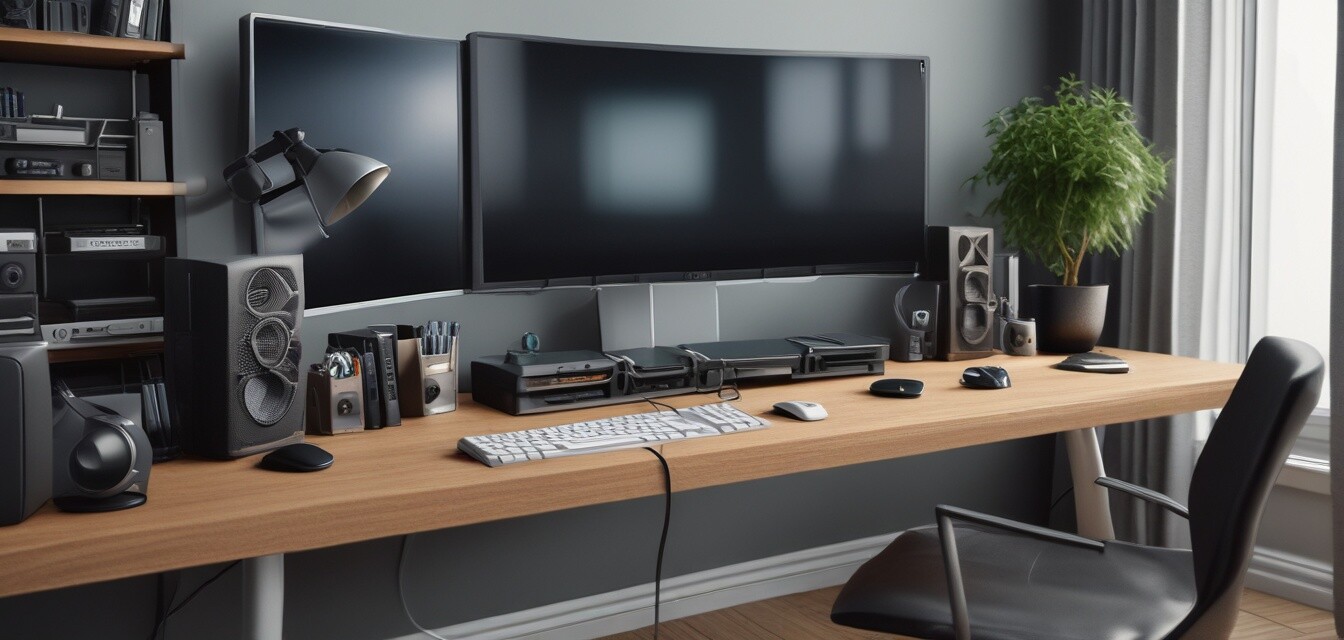
Maintaining Your Cable Organization System: Tips and Tricks
In today's remote working world, keeping your workspace organized is more important than ever. A chaotic mess of cables can hinder productivity and create a frustrating environment. In this article, we'll share effective tips and tricks to help you maintain a flawless cable organization system for the long term.
Key Takeaways
- Regularly clean and assess your cable management system.
- Use a variety of organizers to suit different types of cables.
- Plan your cable layout carefully for both aesthetics and functionality.
- Upgrade your system as needed to accommodate new devices.
- Establish a routine for maintenance to prevent future clutter.
Understanding the Importance of Cable Organization
A clean and organized workspace not only elevates the visual appeal but also enhances productivity. When cables are tangled and disorganized, it leads to stress and inefficiency.
Challenges of Cable Clutter
Here are some common issues caused by cable clutter:
- Tripping hazards: Loose cables can pose risks of falling or tripping.
- Difficulty locating cables: Searching for the right charger or cord can waste valuable time.
- Damage to cables: Tangles can lead to wear and tear, resulting in connection issues.
Effective Maintenance Tips for Your Cable Organization System
1. Regular Cleaning and Assessment
Set aside time every few months to review your setup. Dust and dirt can accumulate, so removing everything for a thorough clean is advisable.
2. Use the Right Organizers
Select organizers based on the types of cables you have. Different types of organizers include:
| Type of Organizer | Description | Best For |
|---|---|---|
| Cable Clips & Holders | Attach cables to a surface to keep them in place. | Small, frequently used cables |
| Cable Organizer Boxes | Hide excess cables and power strips. | Multiple cables and power adapters |
| Cable Sleeves & Covers | Encapsulate multiple cables for a streamlined look. | Multiple cables running together |
| Cable Ties & Straps | Bundle cables together for easy organization. | Long cables or groupings of cables |
3. Planning Your Cable Layout
Before setting up your cable management system, plan the layout to ensure both aesthetics and accessibility. Some factors to consider:
- Visibility: Decide whether you want cables visible or hidden.
- Access: Ensure you can easily reach the cables you use most frequently.
- Flow: Organize cables to follow the natural flow of your workspace.
4. Upgrade as Needed
As you add new devices, revisit your cable management strategy. Maintain flexibility in your setup, allowing you to easily accommodate more devices without creating clutter.
5. Establish a Maintenance Routine
Set reminders to review and tidy your cables regularly. This can be once a month or every quarter, depending on your preferences.
Advanced Cable Management Tools
For those who want to take their cable management to the next level, consider using:
- Data and power management solutions: Specialized tools that optimize both data cables and power supplies.
- Smart plugs: Automatically manage power to devices to minimize clutter.
- Wall-mounted solutions: Save space and keep your cables organized with mounted trays or channels.
Real-World Setup Examples
Picture a tidy workspace that exemplifies good cable management. Below are setups you can emulate:
| Setup Type | Description | Recommended Organizers |
|---|---|---|
| Home Office | A minimalist setup with a clean desk and hidden cables. | Cable Organizer Boxes, Cable Clips |
| Gaming Station | A setup with multiple devices requiring accessible management. | Cable Ties & Straps, Cable Sleeves |
| Workstation | Ergonomic workspace with cables flowing smoothly along edges. | Under-Desk Cable Trays, Wall Cable Channels |
Tips for Beginners
Starting your cable organization journey? Here are a few starter tips:
- Begin small: Organize just a few cables at a time.
- Label cables: This will help you quickly identify which cables go to specific devices.
- Replace any damaged cables: Ensure all cables are in good condition.
Conclusion
Maintaining a cable organization system doesn’t have to be daunting. By following these tips and regularly assessing your setup, you can enjoy a neat and organized workspace that boosts productivity and reduces stress. For more insights, explore our practical tips on how to maintain a clutter-free workspace and discover more about cable clips and holders that might suit your needs!
Pros
- Improved focus and productivity.
- Enhanced safety by reducing tripping hazards.
- Longer lifespan for cables and devices.
- Visual appeal of the workspace.
Cons
- Initial time investment for setup.
- Possible need for additional purchases.
- May require regular maintenance checks.